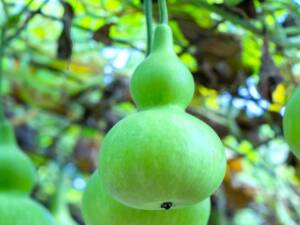Project Report For Calabash Farming
Introduction
Project report for calabash farming is as follows.
Calabash, also known as bottle gourd, is a type of vine that is grown for its fruit, which is used as food and a container in many parts of the world. In India, calabash farming is an ancient practice that is believed to have originated in Africa and was brought to the Indian subcontinent by traders and travelers.
Calabash farming, also known as bottle gourd farming, is a traditional agricultural practice in India. The calabash, or Lagenaria siceraria, is a type of gourd that is grown for both its edible fruit and its decorative and functional uses.

Calabash is a water-loving plant and requires regular irrigation. A well-drained soil that is rich in organic matter is also ideal for cultivation. The plant is also sensitive to frost, so it is typically grown during the warmer months of the year.
The calabash plant has both male and female flowers, which are usually pollinated by insects. The fruit takes about 60 to 90 days to mature and can be harvested when it reaches a size of 15-20 cm. The fruit can be harvested repeatedly over a period of time.
Project Report Sample On Calabash Farming
Get Completely Custom Bankable Project Report
In India, calabash is mainly grown in the states of Andhra Pradesh, Tamil Nadu, Maharashtra, Bihar, and West Bengal. The plant is a vine and requires a lot of space to grow. It is a hardy plant that can survive in a wide range of conditions, making it suitable for cultivation in many regions of India.
Market Potential Of Calabash Farming
In 2021, the Indian agricultural market had a value of INR 22,516 billion. Looking ahead, the market is expected to grow at a CAGR of 10.5% between 2022 and 2027, reaching INR 41,148.7 billion.
Expenses

Product Cost Breakup

Reveneue Vs Expenses

Market Trend

The market potential for calabash farming in India is significant due to the wide range of uses for the calabash plant and its products. It is used for both food and non-food purposes, such as making utensils, musical instruments, and even traditional medicine.
India is the largest producer of calabashes in the world, with the majority of production taking place in the states of Andhra Pradesh, Bihar, West Bengal, and Uttar Pradesh. The total area under cultivation of calabash in India is around 500,000 hectares, with a total production of around 4 million metric tonnes.
The global market for calabash is also growing, with exports of vegetables from India increasing in recent years. The countries that import the most calabashes from India are Bangladesh, Nepal, and Pakistan. Additionally, there’s potential for exporting to other regions as well.
